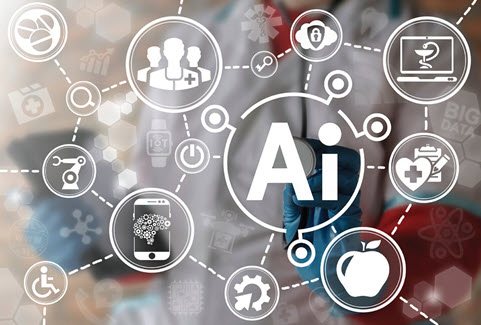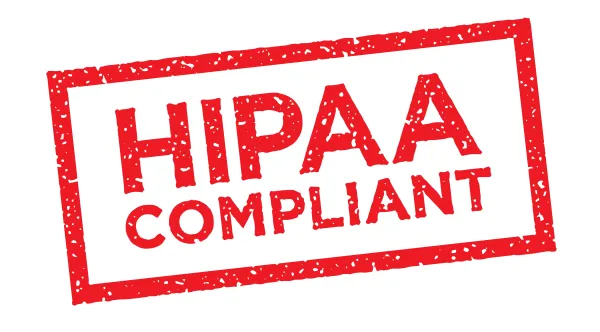General Surgery Coding Alert
Don’t Miss New Appendix S for AI Taxonomy
Understand different levels of machine involvement. If you missed the fact that the CPT® Editorial Panel implemented a classification system for artificial intelligence (AI) in medical procedures last year, you won’t miss it this year when you see Appendix S of the American Medical Associations (AMA’s) CPT® 2023. Context: Although the appendix went into effect on Jan. 1, 2022, it doesn’t appear in the CPT® book until the 2023 update. Let our experts help you understand more about CPT® guidance for handling AI-related procedures. Gain Insights on AI Inclusion Each year, more medical procedures incorporate AI to perform all or part of tasks normally accomplished by humans, requiring varying levels of physician interaction in the service. CPT®’s 2023 update provides context for how those processes might impact coverage decisions. “AI needs a descriptive framework that is used to develop the coverage that, in turn, will adequately pay for expert systems, machine learning, and the algorithm-based services,” according to Robert Jarrin, JD, managing member of The Omega Concern LLC in the recent virtual presentation, “Coding, Coverage, and Payment for AI Medical Services.” Jarrin noted that Medicare payment rates include direct and indirect practice expenses (PE); the latter’s values are based off the Physician Practice Information survey conducted in 2007 and 2008 — “way before we actually had tangible AI in healthcare.” The emerging technologies tend to rely on fees tied to software, licensing, and analysis, rather than the typical equipment and hardware purchases. “Coding will need to reflect AI, as in the work performed by machines, which is why the AMA created Appendix S to the CPT® code set as a taxonomy to provide guidance for classifying AI,” Jarrin said. “I think it’s a testimony to how important this is that the AMA chose to release this taxonomy a full year in advance of when it would normally release a new code. This taxonomy is intended to cover not only AI in the formal sense like machine learning, but also what we might call expert systems, and that is the advanced use of computer technology in order to augment the role of the physician,” said Richard Frank, MD, PhD, chief medical officer of Siemens Healthineers and a member of the CPT® Editorial Panel, who copresented with Jarrin during the virtual event. Understand the ‘3 As’ of AI CPT® Coding Guidelines The CPT® Appendix S categorizes AI into three main hierarchies based on “the clinical procedure or service provided to the patient and the work performed by the machine on behalf of the physician or other qualified healthcare professional (QHP).” These AI classifications are as follows: Assistive example: Code 77048 (Magnetic resonance imaging, breast, without and with contrast material(s), including computer-aided detection (CAD real-time lesion detection, characterization and pharmacokinetic analysis), when performed; unilateral) describes an assistive AI procedure, because the physician must interpret the machine findings, report the results, and make treatment decisions. Augmentative example: Code 95251 (Ambulatory continuous glucose monitoring of interstitial tissue fluid via a subcutaneous sensor for a minimum of 72 hours; analysis, interpretation and report) describes an augmentative AI procedure because the machine quantifies the data over the time period, but the physician or QHP must still interpret and report the findings. Autonomous example: Code 92229 (Imaging of retina for detection or monitoring of disease; point-of-care automated analysis and report, unilateral or bilateral) uses autonomous AI to image the retina and automatically analyze the images and provide a report. The entire procedure is performed with minimal human interaction. Learn the Levels of Autonomous AI Because autonomous AI can operate nearly free of human interaction, the CPT® Editorial Panel established different levels of autonomy. “We decided there needed to be at least three levels within [autonomous AI to cover] the range of what we expect autonomous devices to be doing,” Frank said. The three levels of autonomous AI differ on the amount of physician or QHP involvement as explained below: Anticipate Future Use of AI Coding Framework Appendix S guidelines indicate that the term “AI” doesn’t define the clinical use of any specific procedure. As a result, the appendix doesn’t list specific codes for which the guidelines could apply, although it does list examples. The CPT® Editorial Panel created the taxonomy to define the relationship between the work completed by the machine and the work done by a human, as well as show the relevance to AI. “This taxonomy, this framework for AI code descriptors, anticipates what features that will be, as well as what business models there may be,” according to Frank.

Related Articles
General Surgery Coding Alert
- CPT® 2023:
Capture Pay for Mesh Implantation, Suture/Staple Removal
Look for new and revised codes. General surgeons have several new and revised integumentary codes [...] - MPFS 2023:
Navigate Telehealth Rules Through PHE and Beyond
Don’t miss CPT® 2023 E/M code changes. The rapid expansion of Medicare payment for telehealth [...] - CPT® 2023:
Don’t Miss New Appendix S for AI Taxonomy
Understand different levels of machine involvement. If you missed the fact that the CPT® Editorial [...] - You Be the Coder:
Clarify ‘Established Patient’
Question: We have a new general surgeon in our group who is now treating one patient [...] - Reader Questions:
Don’t Count All Time for E/M
Question: Now that we can code many E/M services based on time, and we can use [...] - Reader Questions:
Focus Carotid Artery Endarterectomy Coding
Question: Our surgeon treated a patient with severe blockage of the right carotid artery by performing [...] - Reader Questions:
Get MIPS Reweighting for COVID-19 Hardship
Question: Our general surgery practice was strongly impacted by COVID-19, and we’d like to apply to [...] - Reader Questions:
Classify Internal and External Hemorrhoid Case
Question: Our surgeon excised a column of hemorrhoids that begins above the denate line but extends [...]




